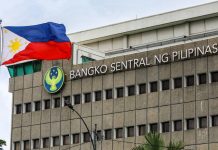
NADI, Fiji – The Philippines has the “potential” to become the fastest-growing economy in Asia, propelled by an unprecedented infrastructure overhaul, tax reform and a young workforce, the Asian Development Bank said Thursday.
A recent credit rating upgrade from S&P Global is also an indication of the “fundamental strength” of the Philippine economy, which has maintained growth at above 6 percent, said ADB Chief Economist Yasuyuki Sawada.
The Philippines’ GDP growth has been among Asia’s fastest, racing China and Vietnam. Official first quarter GDP numbers are due out on May 9, the same day as the Bangko Sentral ng Pilipinas’ policy-setting meeting.
“It’s quite possible for the Philippines to be the fastest-growing economy in Asia,” Sawada told ANC. Debt is “well under control” and over-all fundamentals are “quite strong,” he said.
The Philippines’ work pool is also English-proficient and among the youngest in the region, with an average age of 28. Sawada said this would serve the needs of technology and business process outsourcing companies.
TRADE WAR RISK
The trade war between the US and China poses the “highest risk” to economic growth in Asia.
Should growth in China slow down because of the trade dispute, it could adversely impact the region indirectly, Sawada said on the sidelines of the ADB Annual Meeting here.
The same slowdown, however, could provide Asian economies an opportunity to offer themselves as an alternative to China, he said.
“The overall impact to Asian economies is rather moderate and strictly speaking, slightly positive,” he said.
The Asia-Pacific region is the “global engine” for growth, contributing 60 percent to the world’s economic expansion, he said.
DISASTER RESILIENCE
Disaster-prone countries like the Philippines should consider resilience when building new infrastructure.
A recent earthquake in Central Luzon killed over a dozen people and damaged Clark Airport, highlighting the country’s location in the Pacific “Ring of Fire.” The Philippines is also battered by an average of 20 typhoons per year.
“Building back better is a concept, after the disaster, putting back society and the economy in a better situation than the status quo prior to the disaster,” he said.
“I think this shift in focus is quite an important element of building back better,” he said. (ABS-CBN News)







